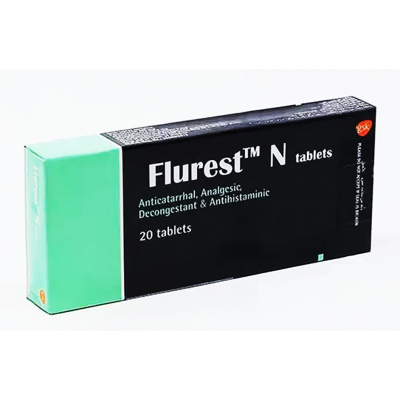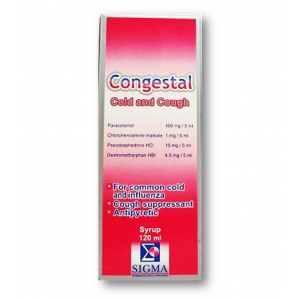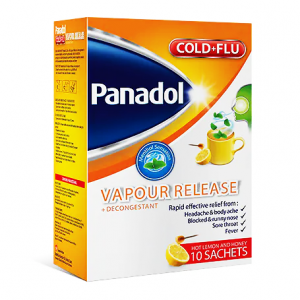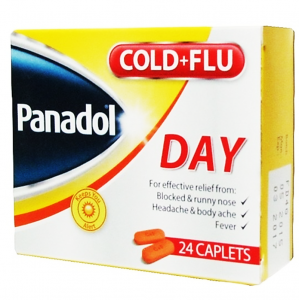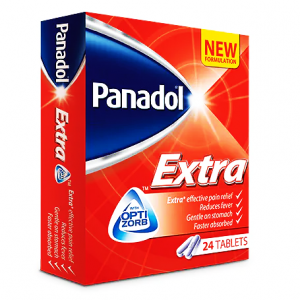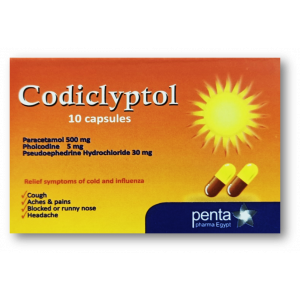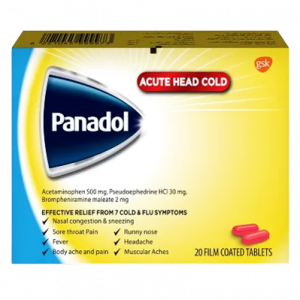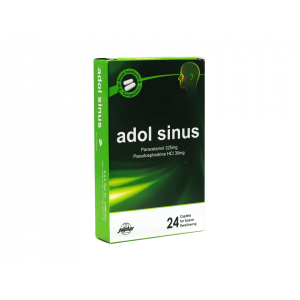Categories
- Anti-hestaminic & Respiratory Drugs (20)
- Anti-inflammatory Drugs (192) +-
- Baby & Mom (1322) +-
- Baby & Mom > Bath, skin & Hair > Skin Care > wibes (52)
- Beauty (3044) +-
- Beauty > Skin Care > whitening (307)
- Chemotherapy & Immune Response (883) +-
- Chemotherapy & Immune Response > ANTI-FUNGAL (11)
- Chemotherapy & Immune Response > Chemotherapeutic Agents > Hormone Antagonists >Enzyme Inhibitors (289)
- CIRCULATORY DISTURBANCE AGENTS (24)
- Diet & Fitness Products (284) +-
- DRUG AFFECTING CENTRAL NERVOUS SYSTEM (192)
- HEMATOLOGY (39)
-
Medical Supplies (503)
+-
- Chemicals & Disinfectants (19)
- Dental Supplies (31)
- Devices & Instruments (10)
- Diabetic Supplies (121)
- General Medical Supplies (21)
- I.V & Medical Solution (0)
- Intensive Care Unit & Anesthesia Supplies (0)
- KIDNEY UNIT SUPPLIES (21)
- Lab Supplies (3)
- Miscellaneous (21)
- Neonatal Unit Supplies (0)
- Operation Room Supplies (2)
- Sanitary (5)
- Sterilization Supplies (0)
- Surgical Sutures (4)
- Syringes (3)
-
Medicines & Health (2691)
+-
- Allergy & Sinus (95)
- Children's Health Care (54)
- Cough, Cold & Flu (277)
- Digestive Health & Nausea (233)
- Ear, Nose & Throat Care (179)
- Eye Care (124)
- Feminine Care (325)
- Foot Care (9)
- Orthopaedic Appliances (1)
- Pain Relief & Management (241)
- Pill Organizer (2)
- Skin Treatments (839)
- Sleep & Snoring Aids (2)
- Support & Braces (8)
- Medicines & health > Gout releif (42)
- Natural & Organic Products (81) +-
- OTC > Analgesics > Anti-inflammatory Drugs (44)
-
Personal Care (3275)
+-
- Bath & Body (271)
- Deodorant & Anti-perspirants (191)
- Ear, Nose & Throat Care (175)
- Eye Care (131)
- Feminine Care (374)
- Foot Care (17)
- Hair Care (472)
- Home Tests & Monitorings (14)
- Incontinence (7)
- Lip Care (22)
- Massage & Relaxation (17)
- Natural & Organic Personal Care (7)
- Oral Care (91)
- Pregnancy & Fertility (65)
- Shaving & Grooming (65)
- Sun Care (80)
-
Prescription Drugs (2914)
+-
- Analgesics (181)
- Cardiovascular System (374)
- Drugs Affecting Musculoskeletal System (65)
- Drugs Used In Infections (56)
- Ear & Nose Drugs (2)
- Endocrine System (176)
- Gastrointestinal Tract (244)
- Gastrointestinal Tract > Hepatology > Liver treatment (62)
- GYNECOLOGY (2)
- Miscellaneous (11)
- NEPHROLOGY > URINARY SYSTEM > RENAL DISORDERS > URINARY TRACT DISORDERS (46)
- NEUROLOGY (225)
- Nutrients & Blood Electrolytes (2)
- Respiratory System (154)
- SKIN > NAILS > HAIR > TOPICAL PREPARATIONS (100)
- Vaccines (1)
- Prescription drugs > Cardiovascular system > Anti-hypertension drugs (242)
- Sexual Wellness (301) +-
- Vitamins & Minerals Supplements (1212) +-
FLUREST N ( CHLORPHENIRAMINE 2 MG + PARACETAMOL 500 MG + PHENYLEPHRINE 5 MG ) 20 TABLETS
Your Review: Note: HTML is not translated!
Rating: Bad Good
Enter the code in the box below:

Price: 20EGP
Ex Tax: 20EGP
Ex Tax: 20EGP
0
Example
Returns

You can return the product within 14 days of purchase.
ReturnsYou can return the product within 14 days of purchase.

FLUREST N ( CHLORPHENIRAMINE 2 MG + PARACETAMOL 500 MG + PHENYLEPHRINE 5 MG ) 20 TABLETS
Flurest N tablets Composition: Paracetamol 500 mg, Phenylephrine HCl 5 mg, Chlorpheniramine maleate 2 mg. Excipients: Maize starch, Povidone K25, Potassium sorbate , Pregelatinized starch, Sodium lauryl sulphate, Microcrystalline cellulose, Stearic acid, Purified talc. Indications: For the relief of the symptoms of the common cold and influenza such as: fever, muscle ache, nasal congestion, sinus congestion, headache and sinus pain, sneezing, itchy and watery eyes. Dosage and Administration: For oral administration only. Do not exceed the stated dose or frequency of dosing. Should not be used with other products containing paracetamol, decongestants or antihistamines, including cough and cold preparations. Dosage and administration: Adults (including the elderly) and children aged 12 years and over: Take 1 to 2 tablets every 6 hours as needed. Maximum daily dose: Eight tablets in 24 hours. Maximum duration of continued use without medical advice: 7 days Minimum dosing interval: 6 hours. Children under 12 years: Not recommended for children under the age of 12 years. Populations: Children: Not recommended for children under the age of 6 years, from 6-12 years not recommended except under medical advice. Note: Multiple active ingredient cough and cold products containing phenylephrine and/or chlorphenamine should not be used OTC in children below 6 years of age. Elderly: The elderly are more prone to adverse effects with chlorphenamine. Renal Impairment: Patients who have been diagnosed with liver or kidney impairment must seek medical advice before taking this medication. The restrictions related to the use of this product in patients with renal impairment are primarily a consequence of the paracetamol and chlorphenamine content of the drug. Hepatic Impairment: Patients who have been diagnosed with liver or kidney impairment must seek medical advice before taking this medication. The restrictions related to the use of this product in patients with renal impairment are primarily a consequence of the paracetamol and chlorphenamine content of the drug. Contraindications: This product is contraindicated in patients: with a previous history of hypersensitivity to paracetamol, phenylephrine, chlorphenamine, antihistamines or to any of the product constituents. Who are receiving Monoamine Oxidase Inhibitors (MAOIs), or for two weeks after stopping a MAOI drug. Warnings and Precautions: Contains paracetamol. Do not use with any other paracetamol-containing products, decongestants, antihistamines or cold and flu medicines. The concomitant use with other products containing paracetamol may lead to an overdose. Paracetamol overdose may cause liver failure which can lead to liver transplant or death. Caution should be exercised in patients with kidney impairment and in those with hepatic impairment due to the paracetamol and chlorphenamine content of the product. Cases of hepatic dysfunction/failure have been reported in patients with depleted glutathione levels, such as those who are severely malnourished, anorexic, have a low body mass index or are chronic heavy users of alcohol. Underlying liver disease increases the risk of paracetamol-related liver damage. Caution should be exercised in patients with cardiovascular disease, hypertension, diabetes, hyperthyroidism, prostatic enlargement, raised intra ocular pressure (i.e. glaucoma), phaeochromocytoma, occlusive vascular disease (e.g. Raynaud’s Phenomenon), epilepsy, bronchitis, bronchiectasis and bronchial asthma. The anticholinergic properties of chlorphenamine may cause drowsiness, dizziness, blurred vision and psychomotor impairment in some patients which may seriously affect ability to drive and use machinery. Chlorphenamine may increase the effects of alcohol and therefore concurrent use should be avoided. 2 Concurrent use with drugs which cause sedation, such as anxiolytics and hypnotics may cause an increase in sedative effects, therefore medical advice should be sought before taking chlorphenamine concurrently with these medicines. Phenylephrine should be used with caution in patients taking beta-blockers or other antihypertensives. Phenylephrine should be used with caution in patients taking tricyclic antidepressants. This product should not be used by patients taking other sympathomimetics (such as decongestants, appetite suppressants and amphetamine-like psychostimulants. This product should not be used with other anti-histamine containing products, including antihistamine containing cough and cold preparations. Children and the elderly are more likely to experience neurological anticholinergic effects and paradoxical excitation (e.g. increased energy, restlessness, nervousness). If symptoms persist for more than 7 days, medical advice must be sought. Keep out of sight and reach of children. Interactions: The anticoagulant effect of warfarin and other coumarins may be enhanced by prolonged regular daily use of paracetamol-containing products with increased risk of bleeding; occasional doses have no significant effect. Hypertensive interactions occur between sympathomimetic amines such as phenylephrine and monoamine oxidase inhibitors. The anticholinergic effects of chlorphenamine are intensified by monoamine oxidase inhibitors. Concomitant use of phenylephrine with other sympathomimetic amines increase the risk of cardiovascular side effects. Phenylephrine may reduce the efficacy of beta blocking drugs and antihypertensive drugs (e.g. beta blockers, methyl-dopa, reserpine, debrisoquine, guanethidine). The risk of hypertension and other cardiovascular side effects may be increased. Tricyclic antidepressants (e.g. amitriptyline) may increase the risk of cardiovascular side effects with phenylephrine. Phenyleprhine used in combination with digoxin or cardiac glycosides may increase the risk of irregular heartbeat or heart attack. Concurrent use of chlorphenamine and hypnotics or anxiolytics may potentiate drowsiness. Concurrent use of alcohol may have a similar effect. Chlorphenamine inhibits phenytoin metabolism and can lead to phenytoin toxicity. Pregnancy and Lactation: Fertility: No relevant data available. Pregnancy: This product should not be used during pregnancy. Human and animal studies with paracetamol have not identified any risk to pregnancy or embryo-foetal development. No relevant data available for products containing phenylephrine. There are no adequate data from the use of chlorphenamine in pregnant women. The potential risk for humans is unknown. Chlorphenamine use during the third trimester may result in reactions in the newborn or premature neonates. Lactation: This product should not be used whilst breast feeding without medical advice. Phenylephrine is excreted in breast milk. Chlorphenamine maleate and other antihistamines may inhibit lactation and may be secreted in breast milk. Ability to perform tasks that require judgement, motor or cognitive skills: This product may cause drowsiness, dizziness, blurred vision and psychomotor impairment in some patients which may seriously affect ability to drive and use machinery. Adverse Reactions: Paracetamol: Blood and lymphatic system disorders: Very rare: Thrombocytopaenia. Immune System Disorders Anaphylaxis: Very rare: Cutaneous hypersensitivity reactions including skin rashes, angiodema, and Stevens Johnson syndrome. Respiratory, thoracic and mediastinal disorders: Very rare: Bronchospasm in patients sensitive to aspirin and other NSAIDs. Hepatobiliary disorders: Very rare: Hepatic dysfunction. Phenyleprhine: Body System Undesirable effect: Psychiatric disorders: Nervousness. Nervous System Disorders: Headache, Dizziness, Insomnia. Vascular disorders: Increased blood pressure*. Gastrointestinal Disorders: Vomiting, nausea. Adverse reactions identified during post-marketing use are listed below. Body System Undesirable effect: Eye disorders: Mydriasis, acute angleclosure glaucoma, most likely to occur in those with closed angle glaucoma. 3 Cardiac disorders: Tachycardia, Palpitations. Skin and subcutaneous disorders: Allergic reactions (e.g. rash, urticaria, allergic dermatitis). Renal and urinary disorders: Dysuria, urinary retention. This is most likely to occur in those with bladder outlet obstruction such as prostatic hypertrophy Chlorphenamine: Body System Undesirable Effect Frequency: Immune system disorders: Unknown: Allergic reactions, angioedema, anaphylactic reactions. Metabolism and nutritional disorders: Unknown: Anorexia. Psychiatric disorders: Unknown: Confusion*, excitation*, irritability*, nightmares*. Nervous system disorders: Very common: Sedation, somnolence. Common: Disturbance in attention, abnormal coordination, dizziness, headache. Eye disorders: Common: Blurred vision. Vascular disorders: Unknown: Hypotension. Respiratory, thoracic and mediastinal disorders: Unknown: Thickening of bronchial secretions. Common: Gastrointestinal disorders Nausea, dry mouth. Unknown: Vomiting, abdominal pain, diarrhoea, dyspepsia. Skin and subcutaneous disorders: Unknown: Exfoliative dermatitis, rash, urticaria, photosensitivity. Musculoskeletal and connective tissue disorders: Unknown: Muscle twitching, muscle weakness. Renal and urinary disorders: Unknown: Urinary retention Unknown. General disorders: Common: Fatigue. Unknown: Chest tightness. *Children and the elderly are more susceptible to neurological anticholinergic effects and paradoxical excitation (e.g. increased energy, restlessness, nervousness). Overdosage: Paracetamol: Symptoms and signs: Paracetamol overdose may cause liver failure. Treatment: Immediate medical management is required in the event of overdose, even if symptoms of overdose are not present. Administration of Nacetylcysteine or methionine may be required. Phenylephrine: Symptoms and Signs: Phenylephrine overdosage is likely to result in effects similar to those listed under adverse reactions. Additional symptoms may include irritability, restlessness, hypertension, and possibly reflux bradycardia. In severe cases confusion, hallucinations, seizures and arrhythmias may occur. However the amount required to produce serious phenylephrine toxicity would be greater than required to cause paracetamol-related liver toxicity. Treatment: Treatment should be as clinically appropriate. Severe hypertension may need to be treated with an alpha blocking drug such as phentolamine. Chlorphenamine: Symptoms and Signs: Overdose is likely to result in effects similar to those listed under adverse reactions. Additional symptoms may include paradoxical excitation, toxic psychosis, convulsions, apnoea, dystonic reactions and cardiovascular collapse including arrhythmias. Treatment: Treatment should be supportive and directed towards specific symptoms. Convulsions and marked CNS stimulation should be treated with parenteral diazepam. Storage: Store at temperature not exceeding 30°C in dry place. MOH approval date: 8 April 2019.
Write a review
Your Name:Your Review: Note: HTML is not translated!
Rating: Bad Good
Enter the code in the box below:

